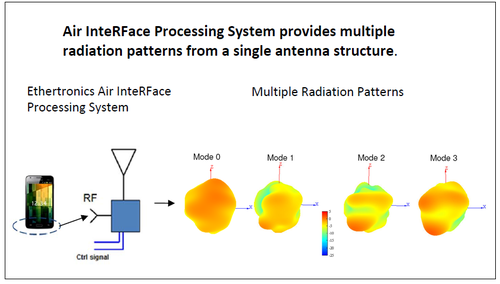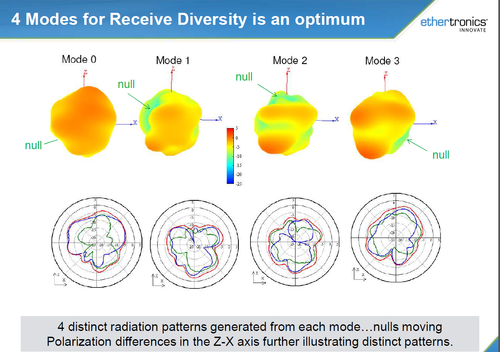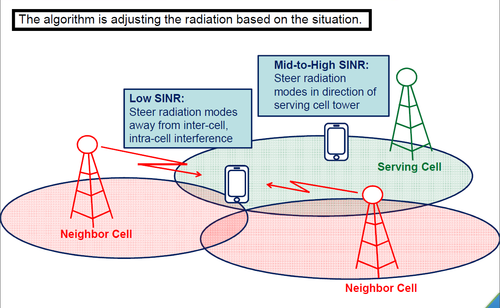One of the biggest challenges facing smartphone users is keeping the devices connected at all times. After all, the trend towards storing more data in the cloud means in order to access increasing amounts of information, you need a fast connection. Moreover, the trend in mobile gaming is to rely on network connections for things like advertising, multiplayer-functions and new scene downloads.
Mobile video consumption of course is nothing new and also requires tremendous bandwidth and connectivity.
In short, mobile devices users want devices regardless of location to be connected in order to take advantage of all the data and entertainment features available to them.
This is where Ethertronics comes in. You’ve likely read that the company has been providing antenna-solutions for years. For example in the Samsung Galaxy S II, the M2M space and of course in LTE-enabled notebooks.
The company’s more recent news however takes their antenna technology to the next level as the company has a new innovation which uses software and microprocessor horsepower to get better performance from antenna systems in various devices. As a result, their Active Steering capability (see diagrams above and below) allows for higher data-rates and better spectral-efficiency. Through beam-steering, the company generates four different radiation patterns via the various antennas on the device and can then choose the one with the best SNIR or signal-to-noise-plus-interference ratio.
As devices move through buildings, this technology can be of tremendous help as continuous sampling allows it to always choose the best antenna and radiation pattern. In fact, the company says they’ve seen increases in spectral efficiency of 30% in LTE carrier trials.
The company is quick to point out their Air InteRFace Processing System is also very useful for GPS, WiFi and works well in office environments. The above diagram shows it performing in one specific situation.
Here is a salient excerpt from the company’s white paper on the matter:
Multipath is prevalent in wireless communications. Multipath, also termed multipath fading, is caused by reflections and scattering from objects in the path between the antennas on either end of a communication link: floors, ceilings, walls, buildings, vehicles, equipment, people, etc. The end result of multipath is that the signal level received at the antenna will fluctuate, with this fluctuation being caused by multiple reflected signals adding in and out of phase. This fluctuation in signal strength at the antenna can be quite large, and can at times result in the signal level dropping low enough to where the communication link is terminated. To mitigate the effects of multipath fading, antenna diversity schemes using multiple antennas have been developed. These antenna schemes can take many forms: radiation pattern diversity, spatial diversity, and polarization diversity. The basis of the technique is to use a second antenna to receive the incoming signal along with the first or main antenna. This second antenna is located in a different position, has a different polarization, and/or has a different radiation pattern compared to the first antenna. When the signal at the first antenna drops due to multipath fading, the signal at the second antenna will often be a few, or several, dB higher resulting in improved communication system performance. Implementing a standard antenna diversity technique requires a second antenna to be integrated into the wireless device.
Ethertronics goes on in the document to describe how using their algorithms and processing they can replicate many of the benefits of multiple antennas – a great breakthrough for devices which need maximal space devoted to processing and battery.
In a recent meeting with the company they told me they saw an increase of 2-2.5 dB in SINR using this technique. Also, there was a 60-120% improvement in weak signal environments. In addition, there is energy savings as a device can turn off its diversity antenna for 3G which can reduce power draw by 30mA. Finally, the system can take into account how often it needs to sample by analyzing the Doppler affect – useful when in a moving vehicle ![]() or if you happen to be an Olympic sprinter.
or if you happen to be an Olympic sprinter.
The only thing which may slow the march to thinner phones is possibly bendgate which turned out to be more hoax than anything else. Still, it seems many are unaware of this fact. Otherwise, we can expect consumer electronics companies to continue making wireless gadgets as thin as they can while being more miserly with their power consumtpion. Since Moore’s Law does not apply to batteries, Active Steering from Ethertronics may be just what is needed to boost the efficiency of these devices.
Update 11/5/14
I asked the company for more information regarding their active steering system and Jeff Shamblin responded as follows:
Active steering will provide additional performance capability to sub-networking and semi point to point comm systems due to the ability to change radiation patterns from the antenna. By replacing a passive antenna (fixed radiation pattern) with an active steering antenna that contains four low correlation patterns along with an algorithm to drive the antenna system, the signal strength of interferers can be reduced during the process of selecting the best radiation pattern. For example, by optimizing SINR during the pattern selection process the radiation pattern that improves the comm link with the intended source can be optimized in conjunction with minimizing interfering sources that are in another direction. So the two-fold benefit of changing radiation patterns of an antenna, increasing antenna gain in the intended direction and reducing antenna gain in another direction (direction of the interferer), can be achieved using our active steering technique.








